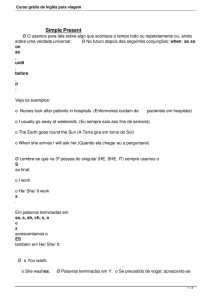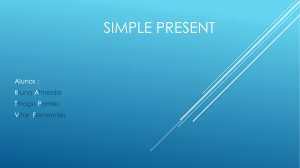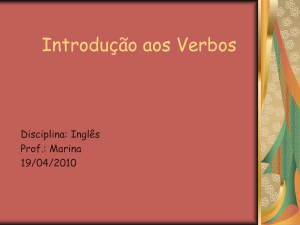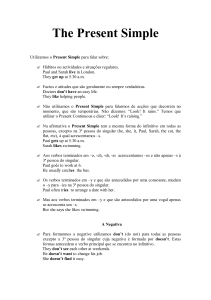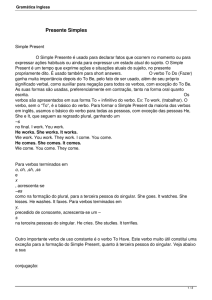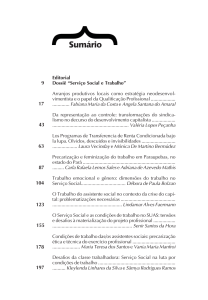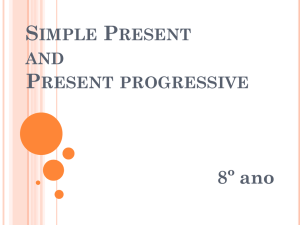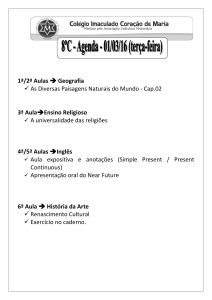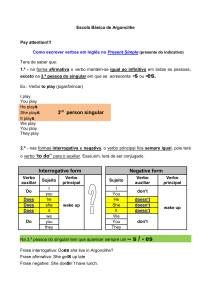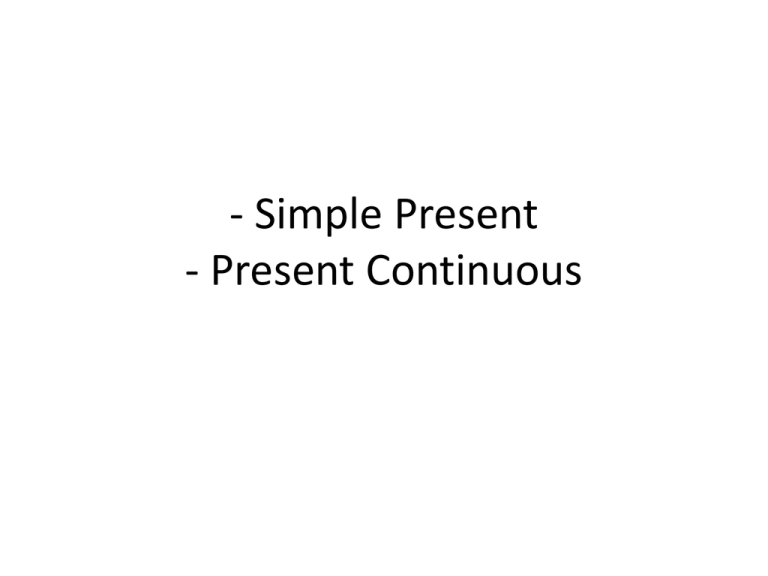
- Simple Present
- Present Continuous
Simple Present
É utilizado para expressar fatos e ações da nossa rotina.
I am a student.
We get up at 7 o’clock every day.
You work hard during the week.
* Algumas palavras que nos ajudam a identificar que a frase está
no presente: every day / every month / every week / always /
usually / sometimes...
AFFIRMATIVE FORM
PERSONAL PRONOUN
VERBS
I
work
YOU
work
HE
Works *
SHE
Works *
IT
Works *
WE
work
YOU
work
THEY
work
* Com a 3ª pessoa do singular (he/she/it) adicionamos “s” ao final do verbo.
- Verbos terminados em “O”, “CH”, “SH”:
- Lily watches TV every evening.
- Lily goes to school in the morning.
-
Verbos terminados em “Y” precedidos por consoante:
- Lily studies at Desafio.
- She carries her cell phone with her at all times.
.
NEGATIVE FORM
PERSONAL PRONOUN
AUXILIARY + VERB
I
don’t work
YOU
don’t work
HE
doesn’t work *
SHE
doesn’t work *
IT
doesn’t work *
WE
don’t work
YOU
don’t work
THEY
don’t work
*DOESN’T é utilizado para a 3ª pessoa do singular (He/she/it) e o verbo
permanece na forma base (sem o “s”).
•She walks the dog in the mornings.
N: ____________________________________
•They play basketball every day.
N:____________________________________
•He cooks very well.
N: ____________________________________
•She wakes up at 7 o’clock.
N: ____________________________________
INTERROGATIVE FORM
AUXILIARY
PERSONAL PRONOUN
VERB
DO
I
work?
DO
YOU
work?
*DOES
HE
work?
*DOES
SHE
work?
*DOES
IT
work?
DO
WE
work?
DO
YOU
work?
DO
THEY
work?
*DOES é utilizado para a 3ª pessoa do singular (He/she/it) e o verbo
permanece na forma base (sem o “s”).
•She walks the dog in the mornings.
I: ____________________________________
•They play basketball every day.
I: ____________________________________
•He cooks very well.
I: ____________________________________
•She wakes up at 7 o’clock.
I: ____________________________________
Present Continuous
Utilizado para falar de ações que estão
ocorrendo no momento da fala.
You are studying.
I am teaching.
Sujeito + verbo “to be” + gerúndio (-ing)
Present Continuous
(negative form)
Para formarmos a negativa do Present Continuous,
basta acrescentar “not” após o verbo “to be”.
You are not (= aren’t) studying.
I am not teaching.
She is not (= isn’t) singing.
They are not (= aren’t) dancing.
Present Continuous
(interrogative form)
Para formarmos a interrogativa do Present
Continuous, basta inverter a ordem da frase,
colocando o verbo “to be” no início da pergunta:
Are you studying?
Is she singing?
Are they dancing?

